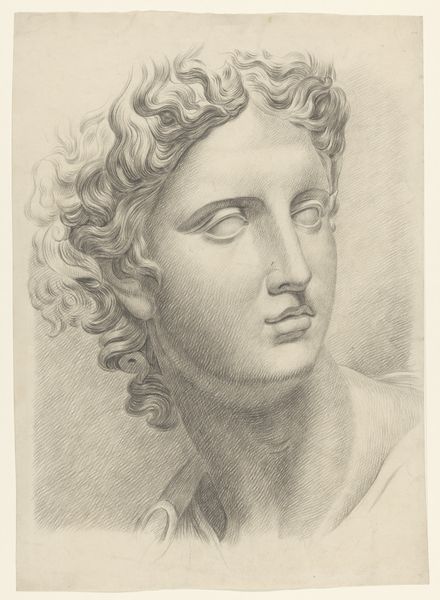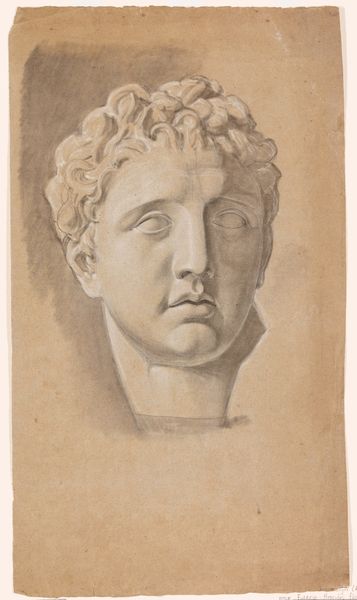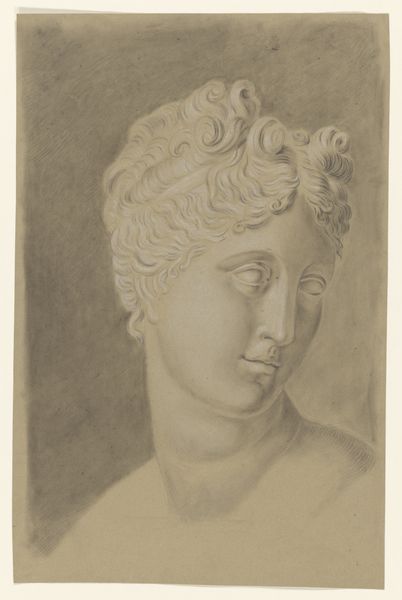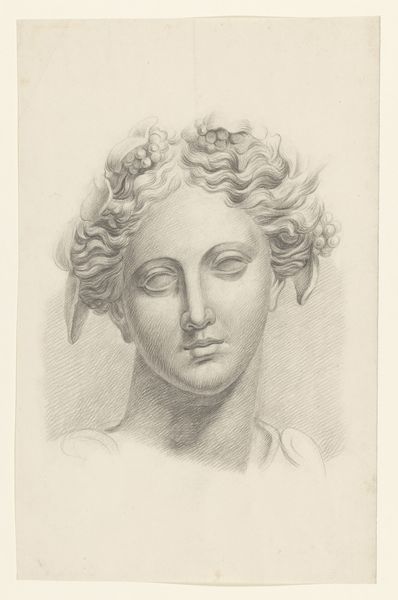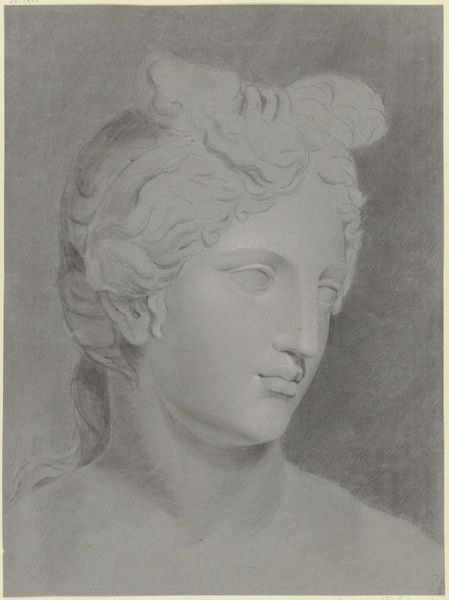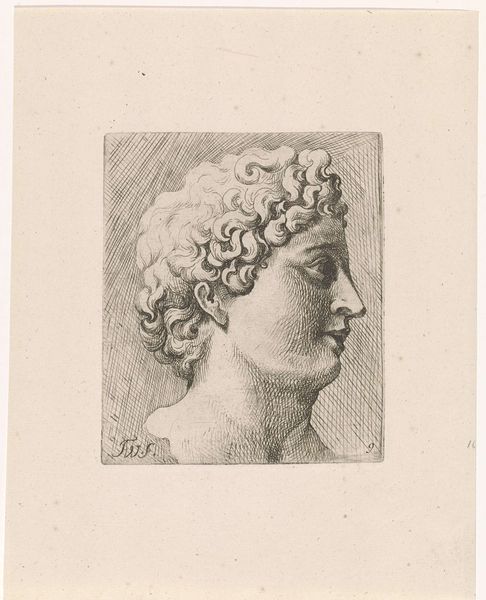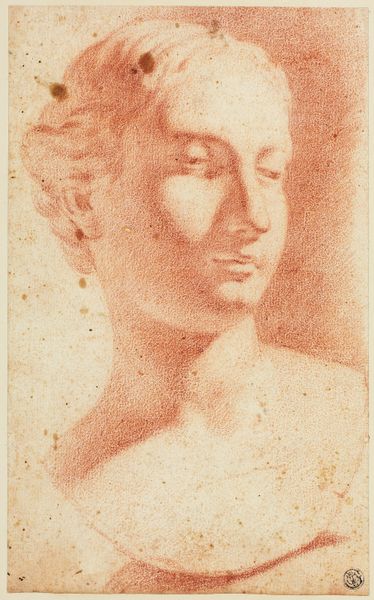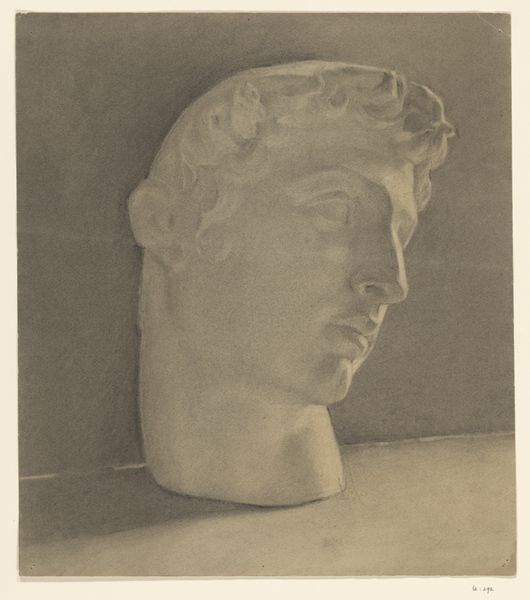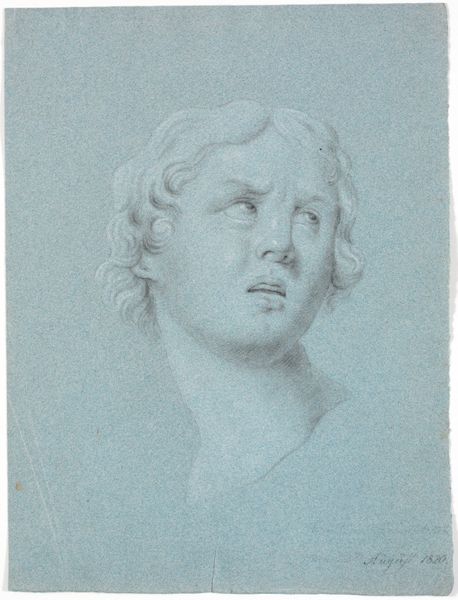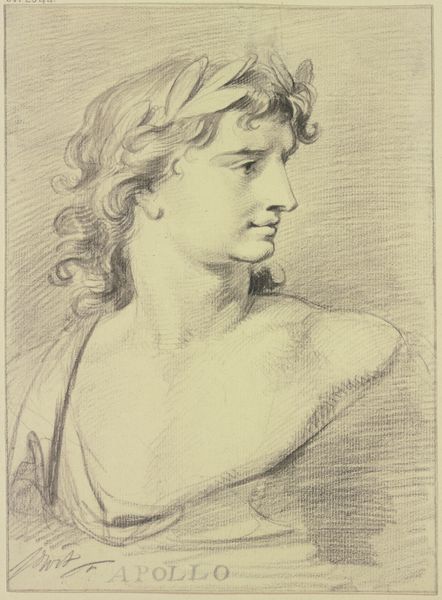
Academiestudie naar gips van antieke buste van een vrouw 1819 - 1881
0:00
0:00
johannestavenraat
Rijksmuseum
drawing, pencil
#
portrait
#
drawing
#
pencil drawing
#
classicism
#
pencil
#
portrait drawing
#
academic-art
Dimensions: height 461 mm, width 295 mm
Copyright: Rijks Museum: Open Domain
Curator: Here we have Johannes Tavenraat’s "Academiestudie naar gips van antieke buste van een vrouw," made sometime between 1819 and 1881. It’s currently held at the Rijksmuseum. Editor: My first thought? That the use of graphite is particularly compelling here; it lends a soft, almost ethereal quality to what would otherwise be a very rigid subject. Curator: Indeed. This pencil drawing exemplifies academic art traditions. These studies were crucial for artists of the time, providing a rigorous training in form and classical ideals, specifically tied to Classicism, where these forms stem from. Editor: Right, the process matters so much here. Think about the hours, the focused labor it takes to render something with such precise detail using such a simple tool. It’s graphite on paper, but it's also about learning a craft. These studies helped artists to get familiarized with materials and the tools. Curator: Exactly, it represents more than just the bust itself, but speaks to the function of institutions like the academy, teaching systems, artistic canons of beauty through antique examples. Editor: Absolutely. These academies really enforced certain values – idealized beauty, technical skill as paramount – they promoted this material process to a specific end, reproducing specific cultural values tied to the antique, such as purity, heroism. Curator: I think it’s interesting to note how this connects back to the museums; because now, seeing these works on display gives new light of their purpose and values, where students worked methodically. Now this is a showcase, we have the opportunity to dissect all of it, even beyond what the artist was thinking. Editor: A kind of reverse engineering, in a way. And also thinking about how readily available graphite pencils were becoming during this period; mass production was beginning to allow broader access to art materials. This had a real democratization effects on the making process of artwork and also the role it acquired on people's everyday lives. Curator: Fascinating points to consider as we study this artwork, looking into its impact across culture and the process for its time. Editor: A layered look, and with an appreciation for where both tradition and process take the artwork.
Comments
No comments
Be the first to comment and join the conversation on the ultimate creative platform.
